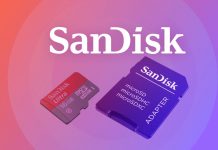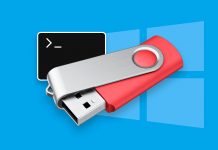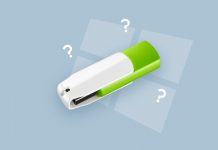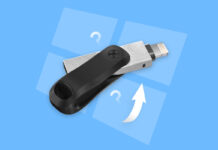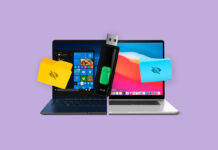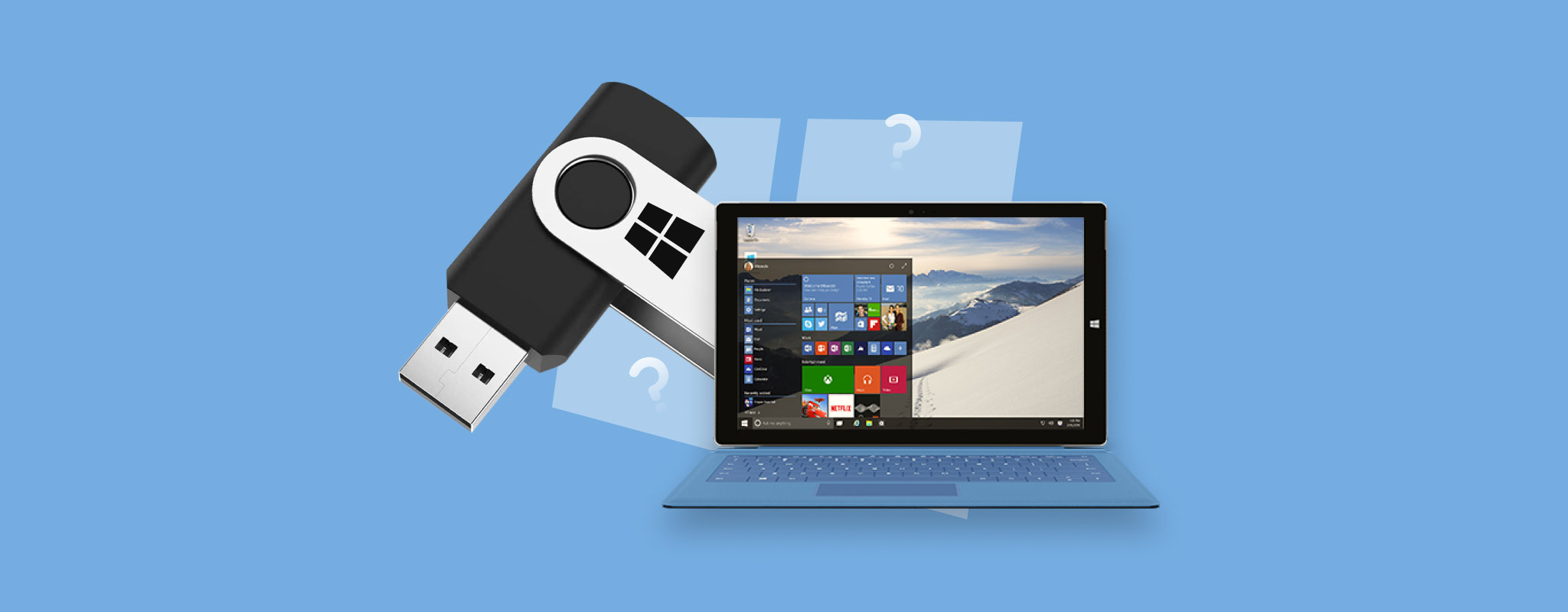 Did you recently format your USB, only to realize afterward that you didn’t get a chance to back up the data stored on it? This can all happen within seconds. Once it’s done, you’re left frantically searching for a way to undo the process and get your data back.
Did you recently format your USB, only to realize afterward that you didn’t get a chance to back up the data stored on it? This can all happen within seconds. Once it’s done, you’re left frantically searching for a way to undo the process and get your data back.
If you’re wondering if it’s possible to unformat a thumb drive, we’ll explain the answer in this article, as well as how to get your lost data back.
Can You Unformat a USB Flash Drive?
There is no way to unformat a USB stick in the sense of reversing a format that recently took place. Once a format has taken place, the only way to unformat a USB is to format it again with a new file system or remove the file system entirely. However, it is possible to recover the data that was lost due to the formatting process. This is done using specialized data recovery software.
Before you unformat a flash drive with a new file system, you must recover the data that was lost in the initial format. While that data remains lost, it’s vulnerable to being overwritten by any new data that is written to the USB. Therefore, you don’t want to take any risks by formatting the USB again and then performing recovery.
How to Recover Files From a USB After Formatting
In some cases, formatting is necessary. Typically, Windows will insist that your USB needs to be formatted when it notices something wrong, such as corruption. If you’ve already formatted your USB that contained data, you still have a chance of recovering your lost files, as long as you performed a quick format and not a full format.
To recover the data, we recommend Disk Drill, a data recovery tool that’s designed for cases like this. It’s quick, easy to use, and offers up to 500 MB of free recovery before needing to upgrade.
Here are a few methods you can use to recover the files from a USB that has recently been formatted.
Method 1: Using Professional Data Recovery Software
A professional data recovery solution is able to deliver top-notch results in comparison to most freeware options. Our preferred data recovery tool is Disk Drill because it’s designed to cater to basically any data loss situation, including this one.
Its all-in-one scanner utilizes multiple scanning methods to find as much data as possible, even when the file system isn’t in a scannable state. While Disk Drill is a paid tool, Windows users can recover up to 100 MB for free to trial the software.
Follow these steps to recover data from a recently formatted USB thumb drive using Disk Drill:
- Download and install Disk Drill.
- Connect the formatted USB and select it in the device list. Click Search for lost data.
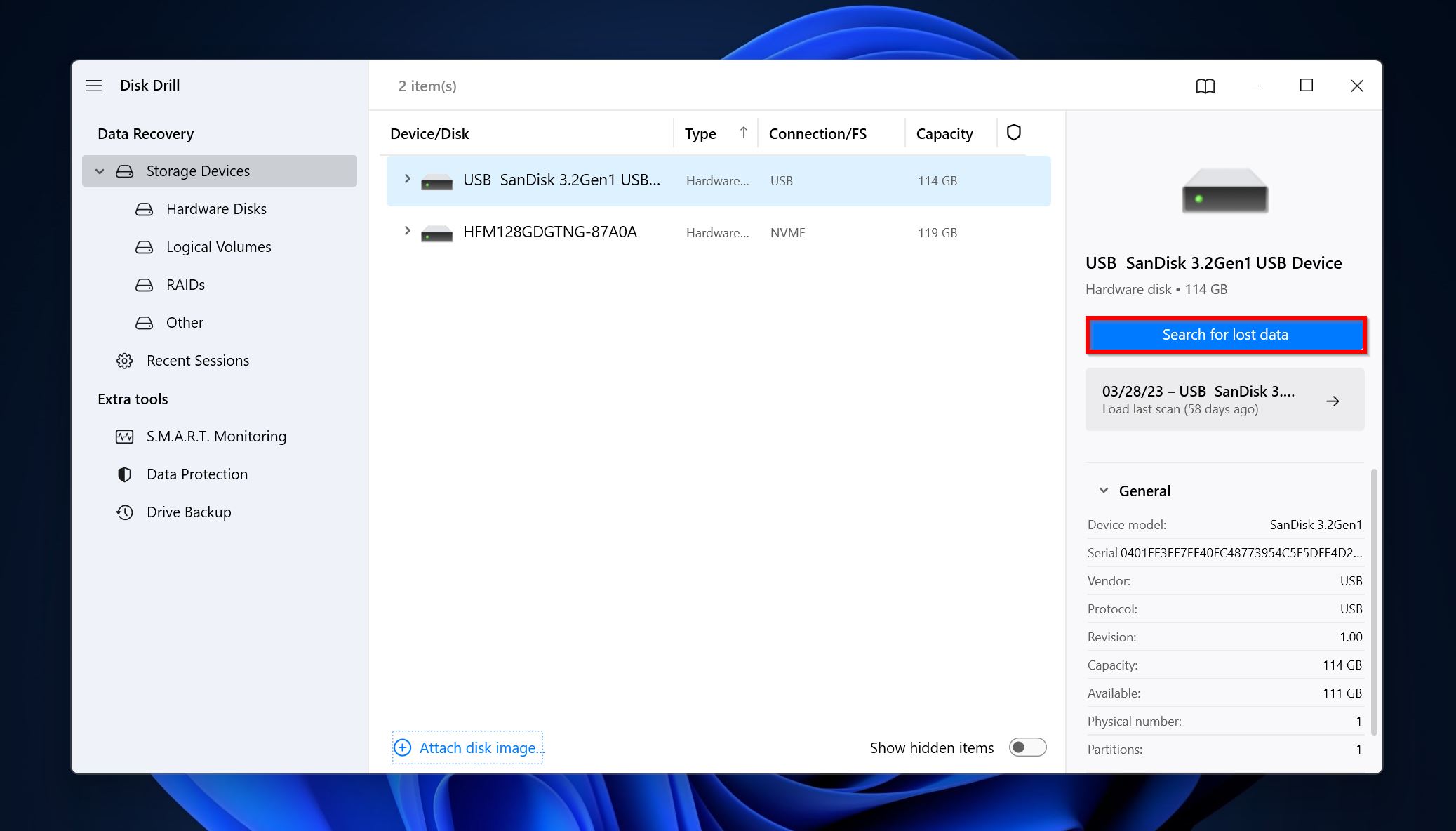
- Click Review found items once the scan is complete. Alternatively, click Recover all… to recover all of the data straight away.
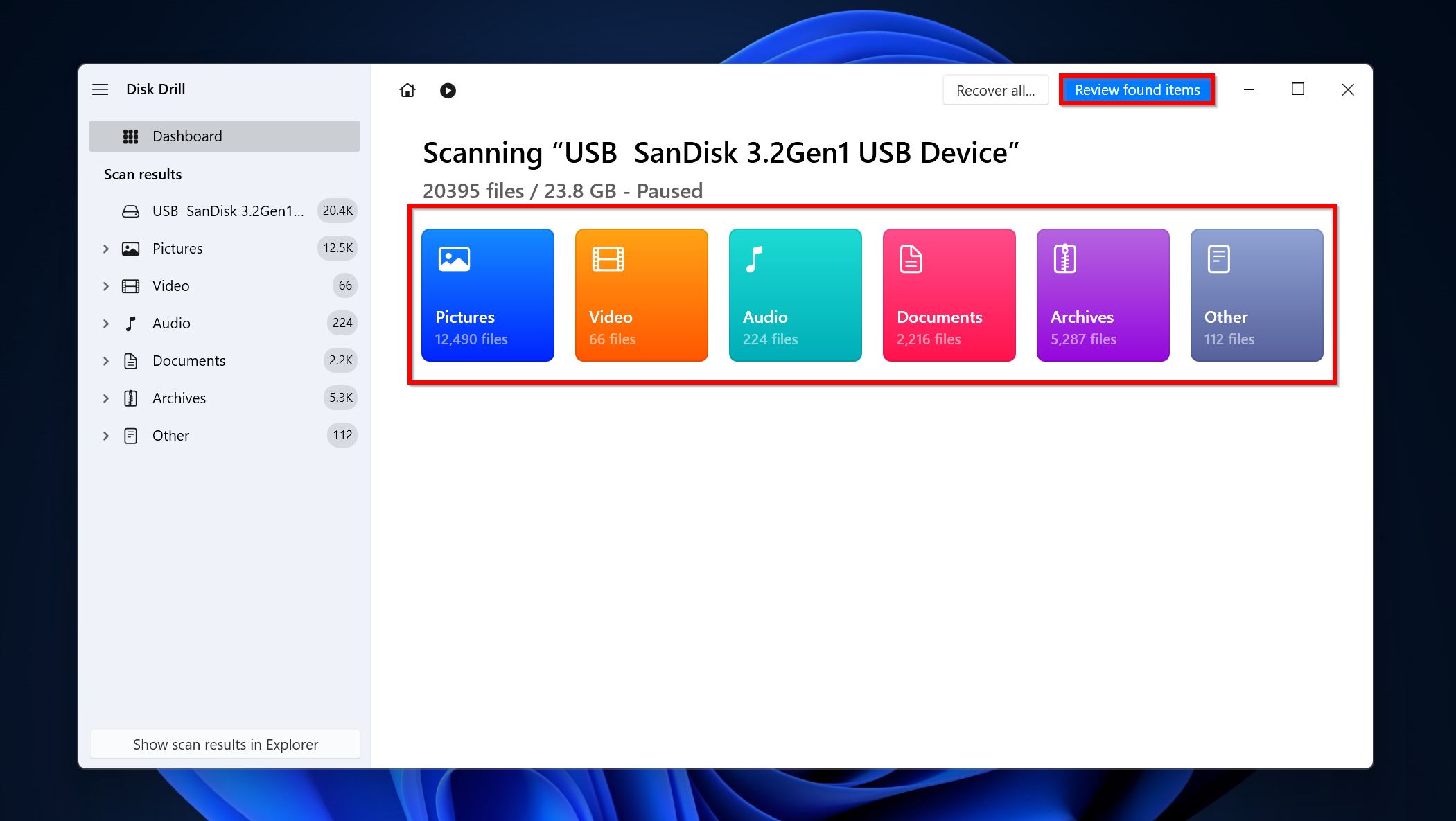
- Mark the files you want to recover. You can make it easier on yourself by using the preview panel and organizing the results with the filter buttons. When ready, click Recover.
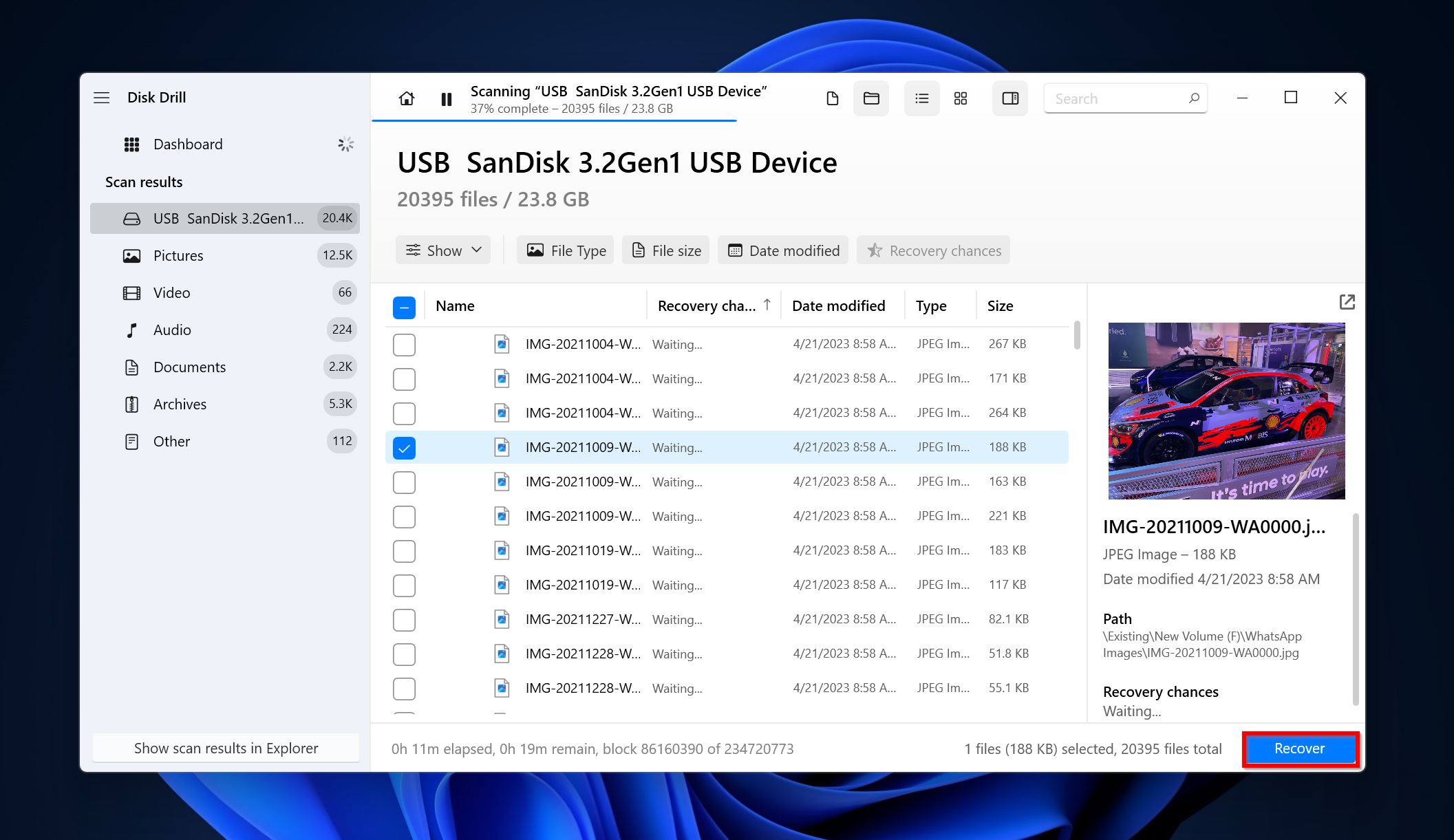
- Select an appropriate recovery location. Make sure you’re not restoring the data to the same USB you’re recovering from. To finish recovery, click Next.
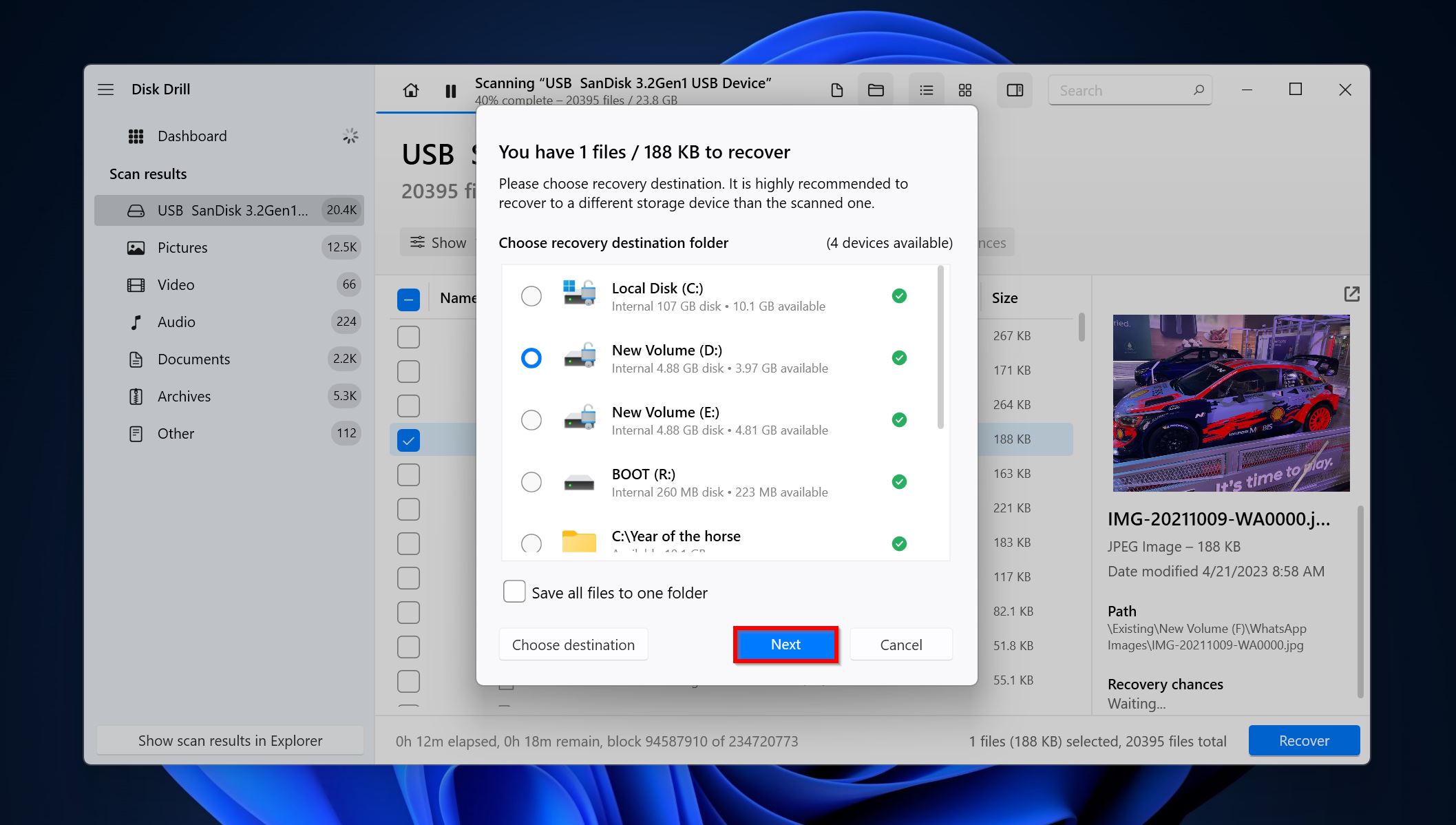
Method 2: Using Freeware Data Recovery Software
Recuva is a data recovery tool that gives you unlimited access to its advanced file recovery features at no cost. While it may not have the same level of recovery performance that’s offered by a professional solution like Disk Drill, it’s still an option for quick file recovery where a high rate of success isn’t a priority or you can’t spend money on a paid tool.
Here is a quick rundown of what recovery with Recuva looks like:
- Download and install Recuva.
- Connect your USB thumb drive.
- Click Next.
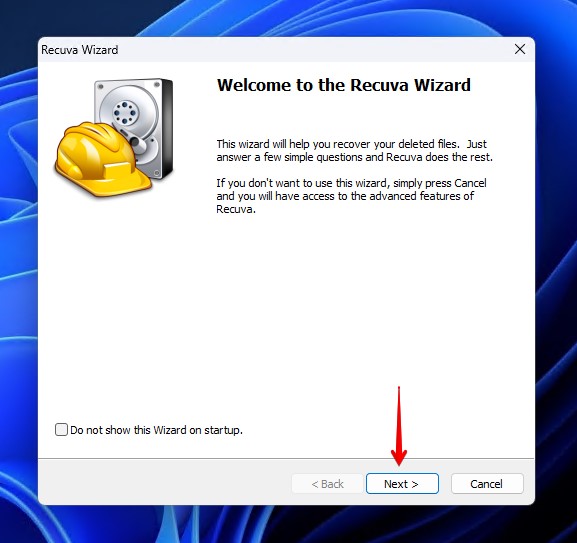
- Choose the type of files you want to recover. If unsure, simply keep All Files selected, then click Next.
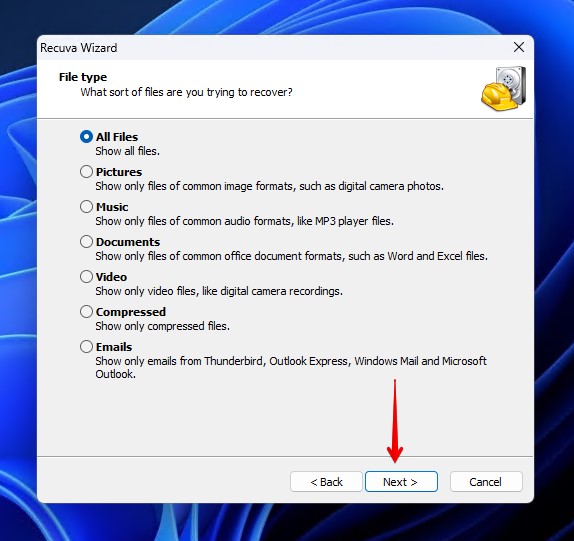
- Click In a specific location and select your USB thumb drive. Click Next.
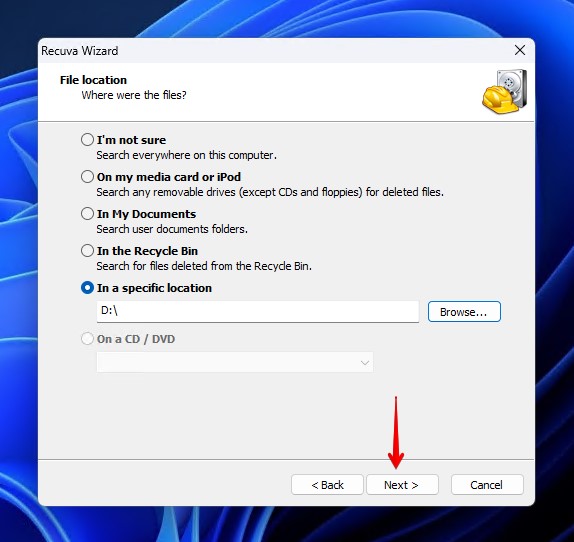
- Click Enable Deep Scan if you want to perform a deep scan. This can be done afterward if the regular scan doesn’t produce the results you need. Click Start.
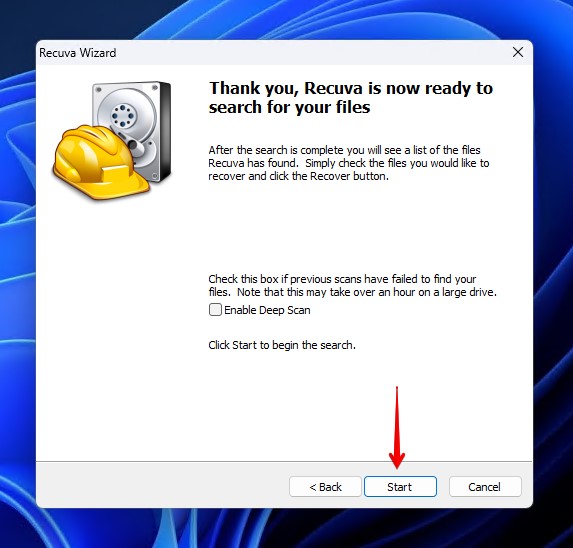
- Select the files you wish to recover, then click Recover.
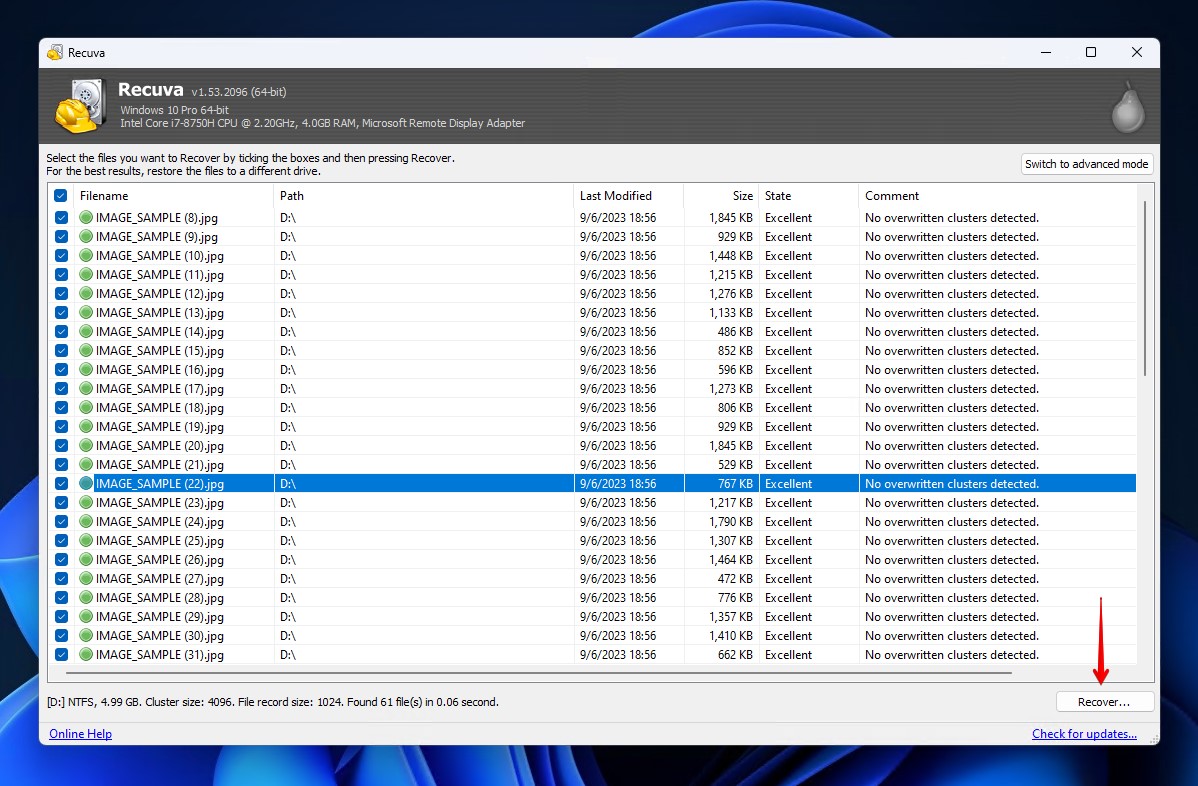
- Choose a recovery destination, then click OK.
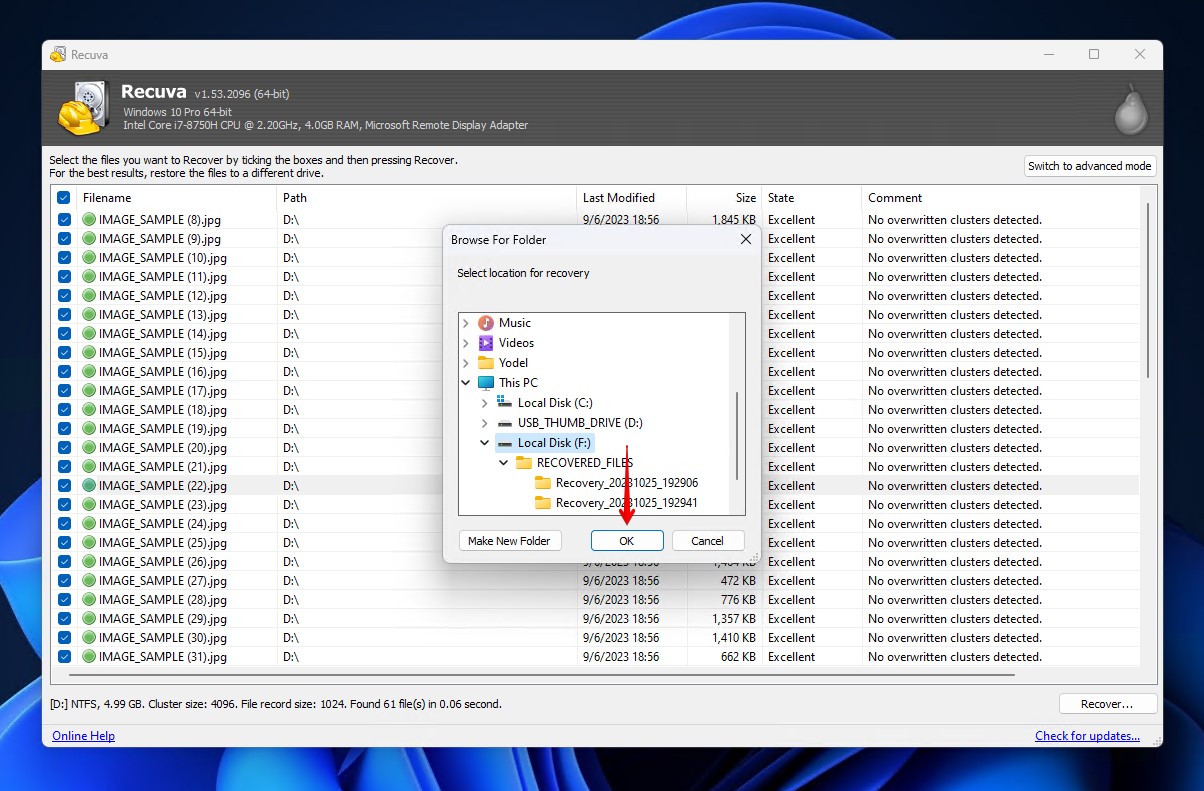
How to Unformat USB Drive on Windows
Once your data is safe and sound, you may want to unformat the USB by formatting it with a new file system. This may be necessary in cases where you accidentally formatted the USB with the incorrect file system.
There are a few ways you can do this, so we’ve included multiple options for you below.
Method 1: Through File Explorer
One of the quickest ways to unformat a USB drive and format it with a new file system is through File Explorer. This can often be done in just a few clicks and is great for those who are already familiar with the File Explorer interface.
Follow these steps to format a USB flash drive using File Explorer:
- Connect your USB thumb drive and open File Explorer.
- Right-click your USB thumb drive and click Format.
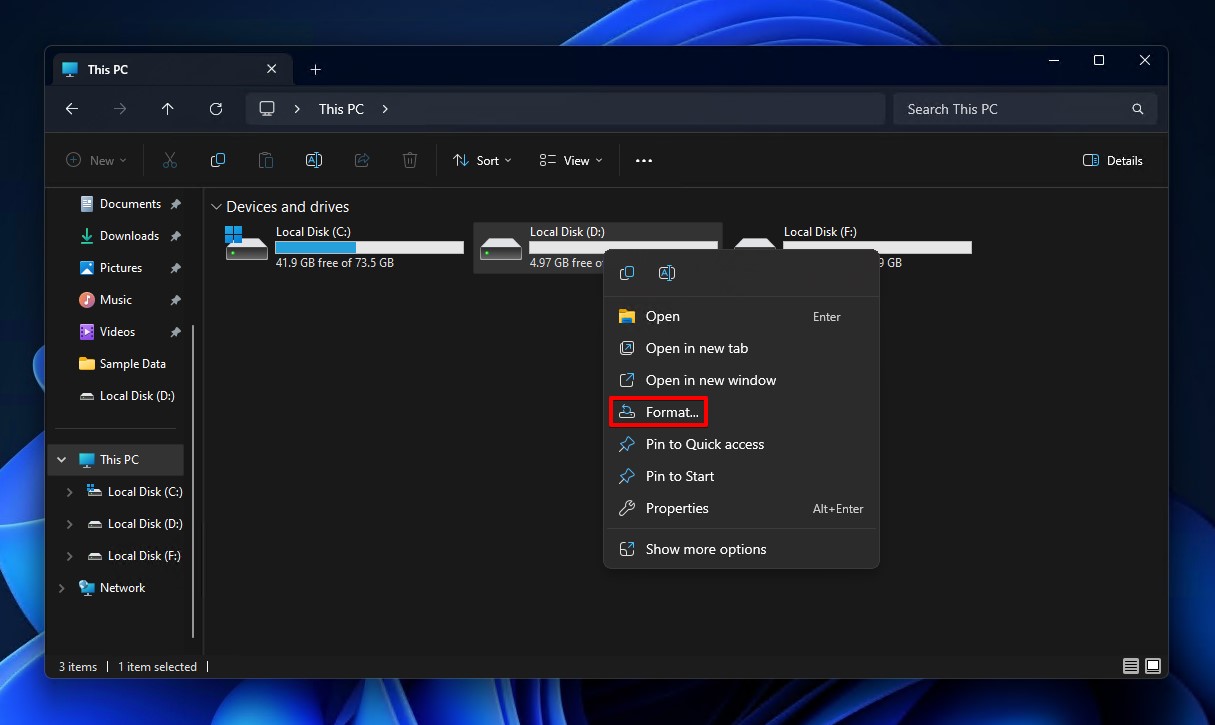
- Choose a file system, give the drive a volume label, and ensure Quick Format is ticked. Click Start.
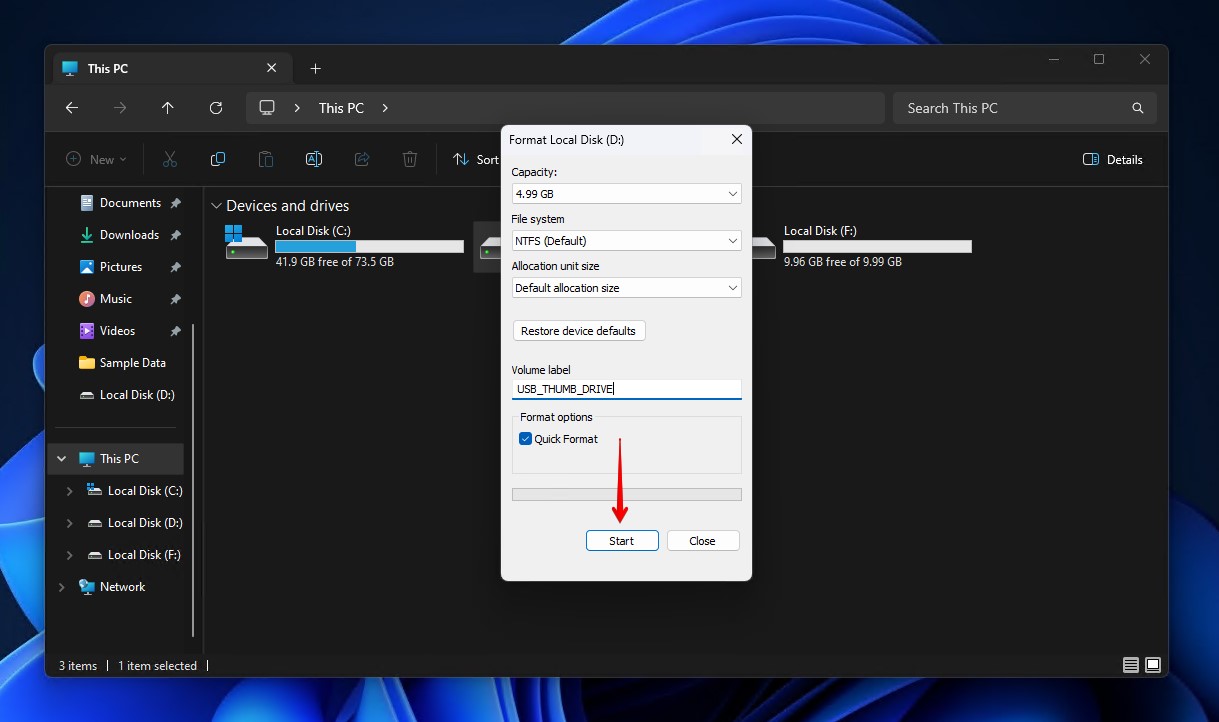
- Click OK to confirm the format.
Method 2: Through Command Prompt
For those more comfortable with a CLI, you can use Command Prompt (or PowerShell or Terminal) to format your USB thumb drive using commands instead.
Follow these steps to format your USB thumb drive through Command Prompt:
- Right-click Start and click Terminal (Admin).
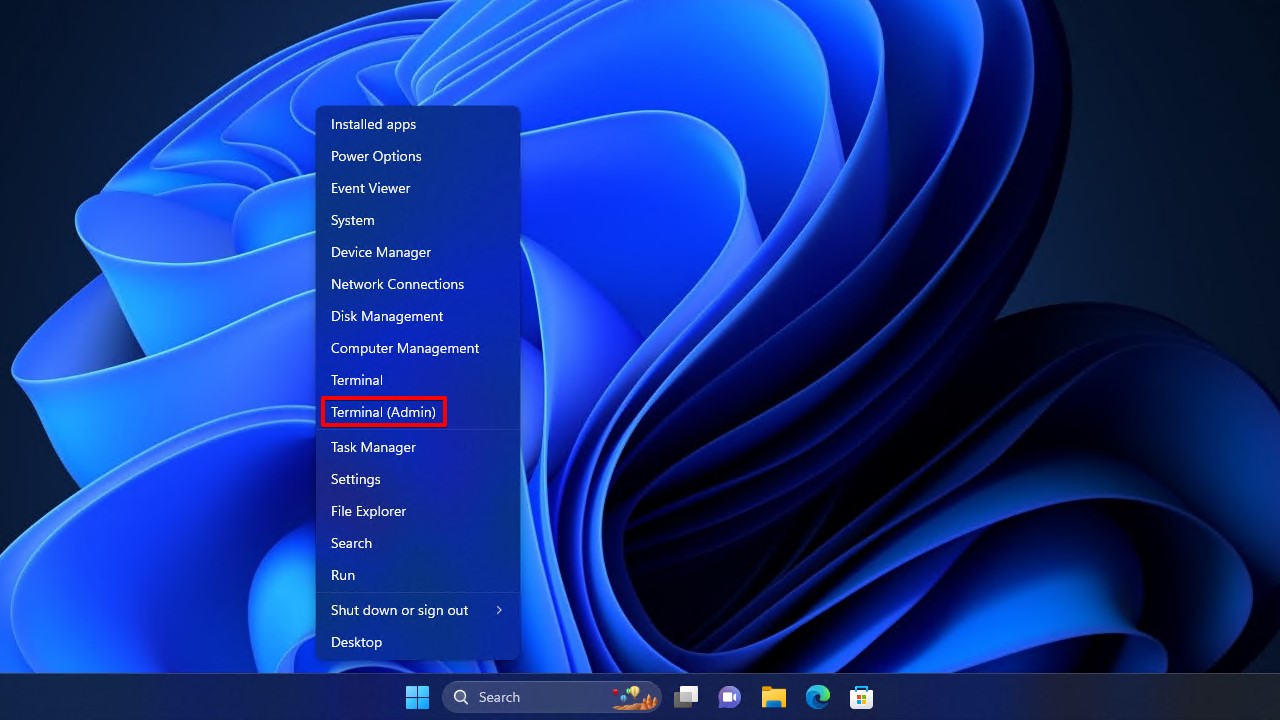
- Type
format *: /q. Replace * with your drive letter. Press Enter.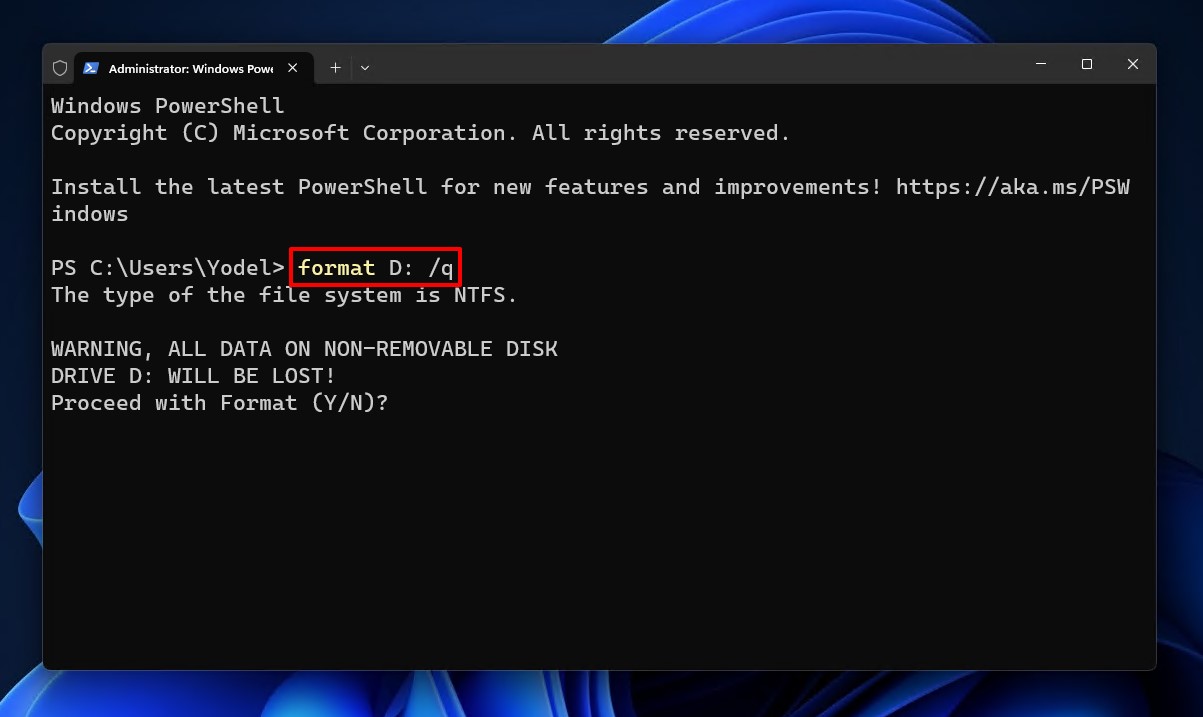
- Type
Y, then press Enter to confirm the action.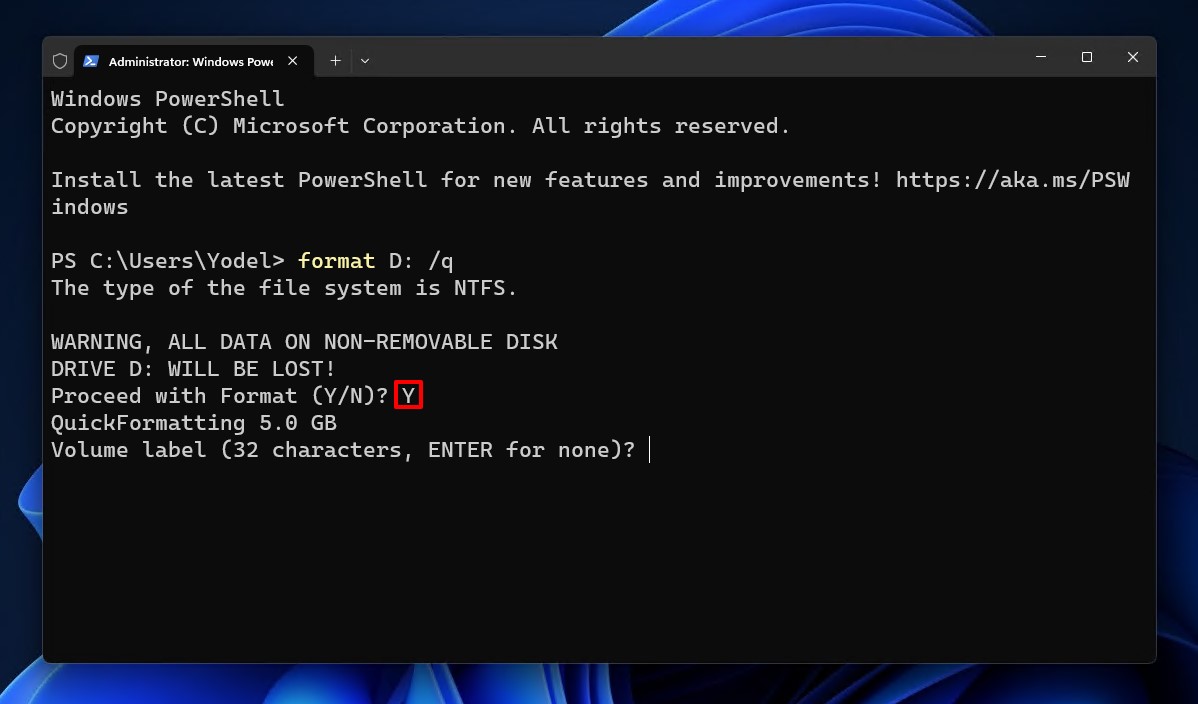
- Enter a volume label, then press Enter.
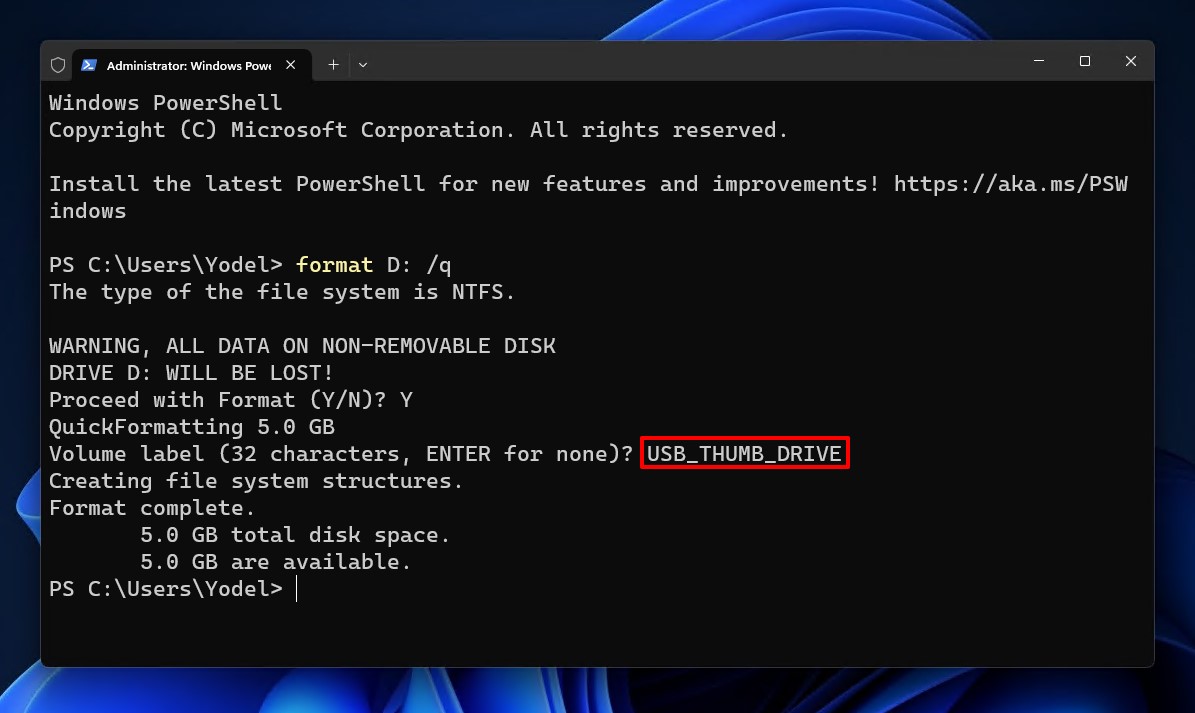
Seeing as the command is super basic, you may want to explore the additional parameters for added customization, like specifying a file system.
Method 3: Through Disk Management
Disk Management also offers a means of formatting your USB thumb drive. It’s a better option if you want to format the USB drive and partition it in a particular way using a graphical user interface.
We’ll guide you through how to unformat a USB drive and format it with the correct file system using Disk Management:
- Connect the USB.
- Right-click Start and click Disk Management.
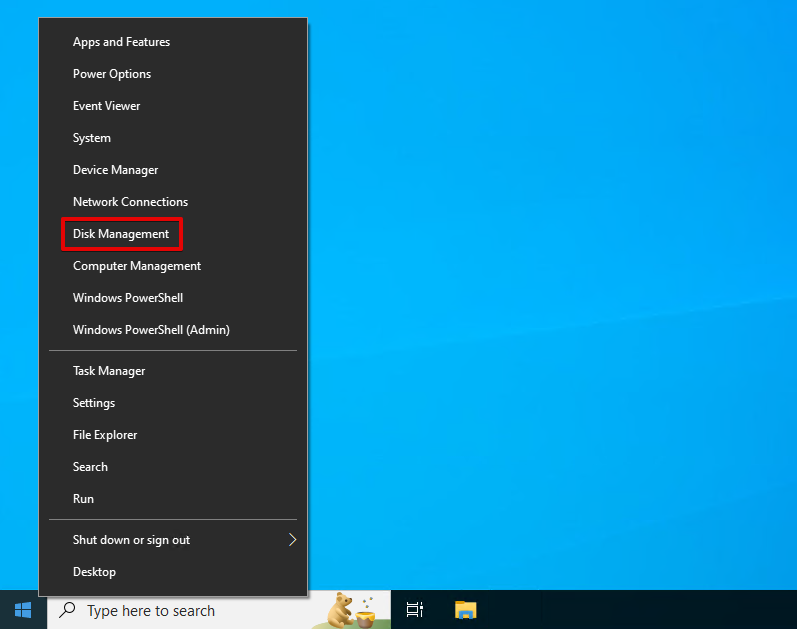
- Right-click the volume of the USB, then click Format.
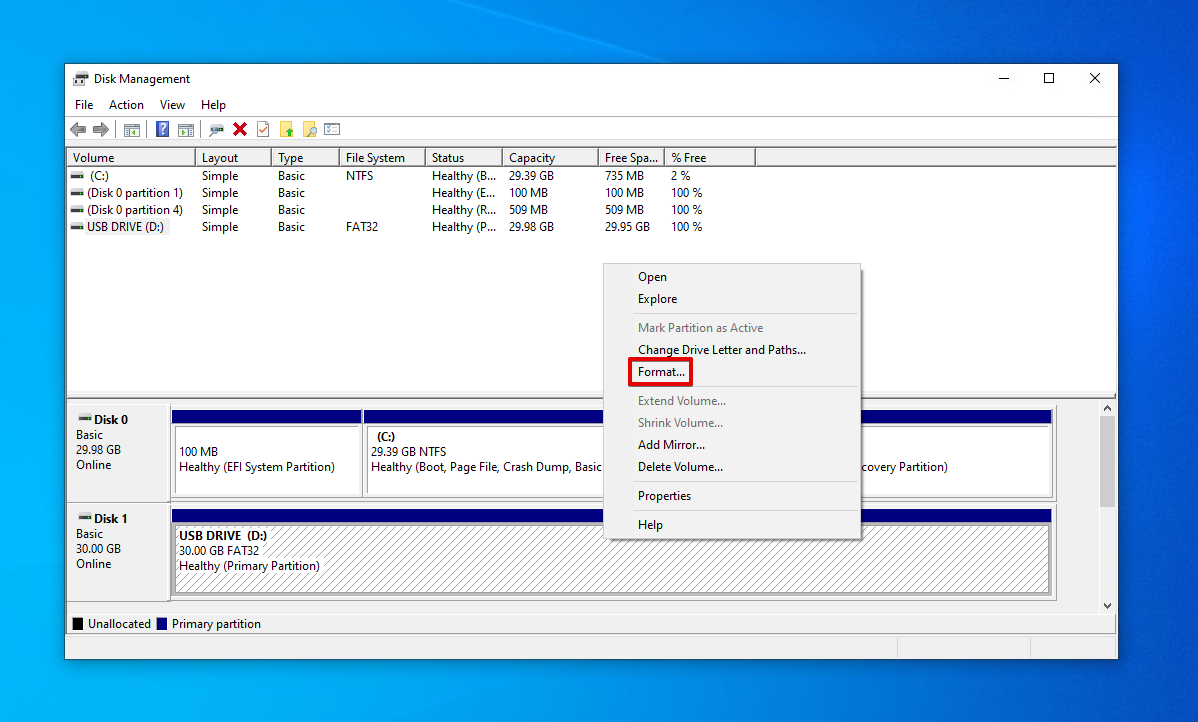
- Give the USB a name and select the file system you want to use. Also, be sure to select Perform a quick format. Click OK.

- Click OK again to finalize the format.
Following the recent format, the previously unformatted USB flash drive will now be ready to store data once again.
If you’re searching for a way to truly unformat a USB by removing its file system entirely, this can be accomplished using the HDD LLF Low Level Format Tool by HDDGuru. Bear in mind that this will make the USB raw, ready for a new file system.
How to Prevent Formatting Accidents
There are a few things you can do to ensure all future formats go smoothly, without error. Here are some quick tips:
| Tip | Description |
| 🗃️ Choose the right file system | Some devices only accept certain file systems. Typically, only compatible file systems will show as options, but bear this in mind if using third-party tools. |
| ⏩ Always quick format | Only in rare instances should you perform a full format. It’s best to go with a quick format because it’s fast and gives you a chance to recover your data if something goes wrong. |
| ⏏️ Don’t remove the drive | Never remove the storage device during a format. Doing so can cause the file system to become corrupted, leading to further complications. |
| 💽 Back up the data | Most importantly, if you need the data on the USB, back it up. This should go without saying though, as formatting, by design, deletes all of the data on your USB. |
Conclusion
There is no way to unformat a USB that has recently been formatted. Instead, the only way to unformat a USB is to format it with a new file system again. However, it is possible to recover data from a recently formatted USB, so long as a quick format was performed and not a full format.
You can recover the data from the formatted USB using Disk Drill. After the data is restored, you can unformat the USB by formatting it with a new file system. This can be done by opening Disk Management and formatting the volume of the USB. Once the format is complete, you can begin writing data to the USB.
FAQ
- Connect the USB to your Mac.
- Go to Applications, then Utilities and open Disk Utility.
- Select the USB and click Erase.
- Specify a name and format, then click Erase.
